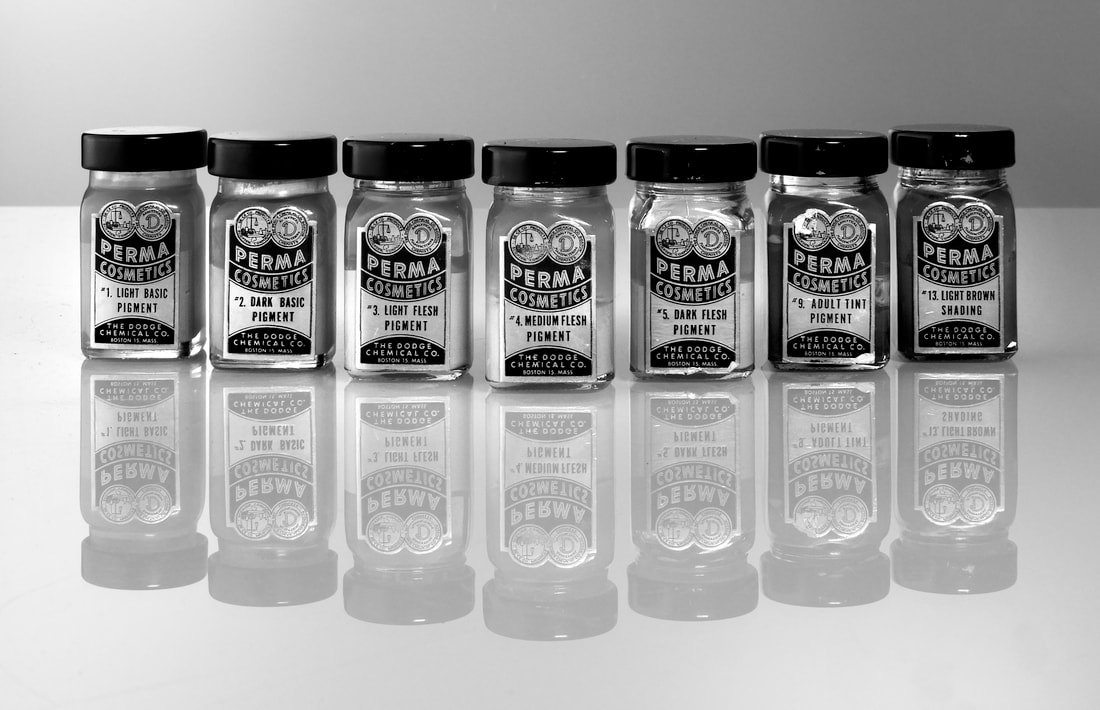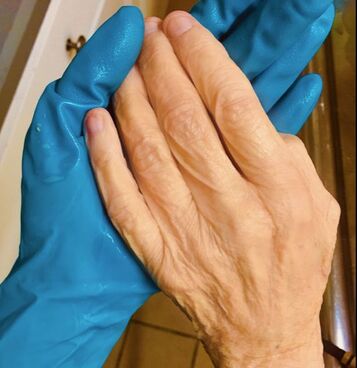|
These presentations are available for state associations, district meetings & continuing education, as well as private presentations for funeral service practitioners and mortuary science institutions.
*All available seminars have been approved by the Academy of Professional Funeral Service Practice for continuing education credit. |
PREP ROOM COLOR THEORY I
|
In this presentation, we’ll begin the exploration of applicable color theory for the prep room. This begins with identifying decedents’ undertones as guides for more educated intrinsic dye choices during the embalming process. The Munsell color system will be discussed in regard to color choices and mixing for both intrinsic and extrinsic color application. While examining anatomy to inform us of color variegation, we’ll cover the various viewable areas of decedents that should be considered when cosmetics are applied for people of various skin tones and complexions.
|
PREP ROOM COLOR THEORY II
|
In this presentation, we’ll continue the exploration of color theory relevant for the prep room by reviewing several practical application cases. After a quick recap, we dive into recreating natural lip color by doing a walk-through of a dark skin colored individual’s natural lips. We’ll discuss color mixing of both mortuary makeup and airbrush to recreate both warm and cool toned decedents. After a quick tease of airbrush basics to understand the fundamentals, I’ll demonstrate its use for several discoloration cases including bruises, biliverdin dominated decedents, and unembalmed natural decomposition. We’ll then walk-through an entire case of both a decedent’s hands and face. To conclude, we’ll also take into account how lighting is utilized in funeral homes to aid in the cosmetic appearance of decedents and its relevance.
|
THE BIOLOGY BEHIND BETTER COSMETICS
|
Summary – 90 minutes (technical)
Often when someone views a loved one with poor cosmetics done on them, it solidifies in their mind that they no longer want to see another loved one in a casket for fear they may also look "horrible". It's only through our dedication to becoming better at achieving a more natural appearance of cosmetics that can we turn this stereotype around. In this session, a thorough investigation of numerous skin types will be explored, looking at the importance of identifying a body's skin tone and its variation in hues. Techniques with using mortuary cosmetics vs. air brush and other small tips in order to help with a more proficient cosmetic application will be relayed by thoroughly covering color mixing. A step by step process for specific scenarios, including covering bruises and recreating freckles will be shown, as well as step by step cosmetics for a partial facial reconstruction. Will cover:
|
RESTORATIVE TECHNIQUES TO KEEP THAT CASKET OPEN
|
Summary – 90 minutes (technical)
Embalmers and Funeral Directors know all too well the Open Casket Challenge – when a decedent’s loved ones state that they’re going to “wait and see how they look” before deciding to leave the casket open or not for final viewings. It’s an anxiety-ridden challenge that can be tackled with ease when we have a broader range of skills at our fingertips to elevate the appearance of decedents to look “more natural”. This presentation will review several technical skills both during embalming and post-embalming, as well as color considerations and cosmetic application to better help achieve this and succeed at this challenge. Attendees will gain the knowledge and confidence to implement several techniques on both “normal” and “reconstructive” cases to help create a more natural appearance of the decedent – which will be persuasive to their loved ones to have open casket viewings. |
A GUIDE FOR TACKLING MINOR RESTORATIONS
|
Summary: 60 or 90 minutes (technical)
In this presentation, we’ll explore different minor restorative scenarios and ways to tackle each situation. This will span from covering bruising, to fixing facial lacerations, simple waxing techniques, color correction procedures, and alternative materials that can be utilized. It will conclude with demonstrating a multitude of these skills being implemented in a specific case study of facial tumor removal & restoration. |
PEDIATRIC FUNERAL CARE
|
Summary – 60 minutes (customer service & technical)
This presentation will explore in-depth ways to serve families that have experienced the death of a child either unexpectedly or expectedly. It will specifically demonstrate ways to work alongside Hospice for imminent pediatric cases before the death occurs and how to have those early conversations with families. Options for ways the transfer can be done, as well as final viewings both with and without embalming will also be shared through personal cases that I’ve handled – each one unique in circumstances for services ranging from being a liaison to the child’s school to exploring newer methods of disposition. Specific ways to honor the child within the family’s chosen service will be reviewed for: direct cremations, home funerals, green burials, witness cremations, traditional services, shipment of the body, and aquamation/water cremation. Attendees will walk away with a plethora of ideas when serving the family of a child that has died, which will include language exploration to have the initial conversations with the family, gentle ways to do the transfer, technical concepts for body presentation for final viewings both embalmed and unembalmed, a variety of ways for family involvement to occur, and ways to make services more appropriate for possible younger audiences as well. The biggest takeaway though will be learning the means to gain the family’s trust as they inevitable must hand over their child to you, which arguably can be the most important element of serving pediatric cases. *Artwork is "Tethered to My Heart" by Christina Bothwell, shown with permission |
NEW FOR 2024
THE ANATOMY OF FEATURE BUILDING
|
Summary: 60 minutes (technical)
By thoroughly understanding facial tissue and muscle anatomy, the fear of feature building can be left in the past! Using anatomical knowledge along with some tips and tricks, we’ll explore how you can achieve a more accurate and natural definition of facial forms, even when affected by death, gravity, and the embalming process. Several step-by-step cases will be analyzed and walked through for re-establishing the decedent's natural form. |
RESTORING HONOR: RESTORATIVE, COSMETIC, & FUNERARY CONSIDERATIONS FOR DONOR CASES
|
Summary: 60 minutes (technical)
This presentation will go full circle, encompassing language for both pre-arrangements and at-need discussions about their loved one being a donor, chemical selection for instances of embalming and its benefit for a more positive final view, non-embalming solutions for when the disposition doesn’t allow for embalming or require it, as well as basic reconstructive and cosmetic applications. This technically will cover cases that include:
|








